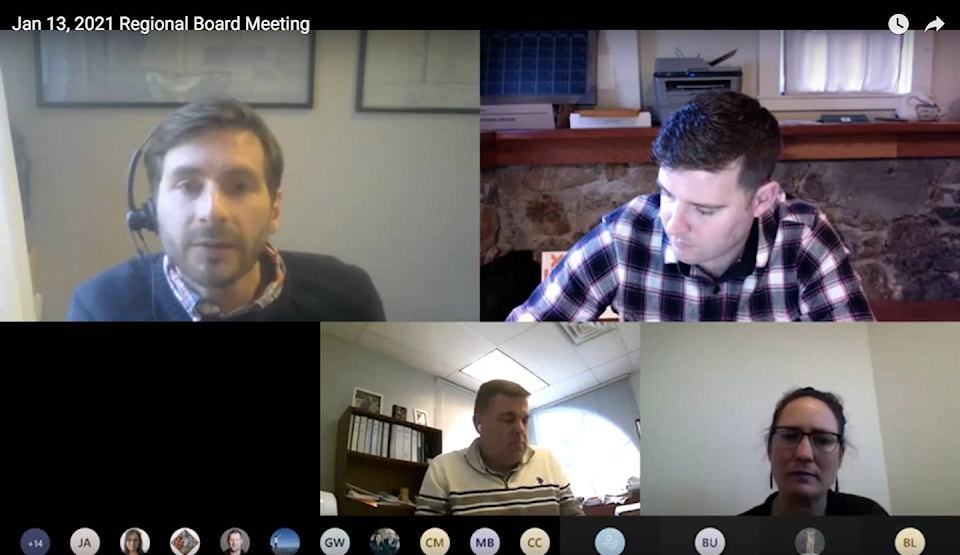Quadra and Cortes residents could be looking at improved wireless services, if an idea to install new communications towers moves forward.
Representatives from Telus spoke at the Jan. 13 Strathcona Regional District board meeting about possible ways to extend the company’s service area on the islands. The idea is to find suitable land to install repeating towers that would then broadcast wireless services to users. The towers would tie in to existing fibre optic cables on the islands, which would then be sent to phones and devices on land and in the surrounding waters.
The COVID-19 pandemic has exacerbated an existing problem with the connection in the islands, as many businesses and citizens have been using the Internet to live their lives while staying physically distant. The service gaps have been felt, prompting many to reach out to their local representatives or Telus directly to find a solution, according to Brian Gregg, a land use consultant, for SitePath Consulting Ltd., the agency working with Telus on this project who gave the presentation to the board.
However, getting wireless Internet to a rural area is not simply flipping a switch.
First, a provider will need to identify a location that will provide the best coverage and will suit most of the population. Telus has identified five possible areas in the islands, two of which it is ready to go to public consultation on, but those locations also need to be rezoned to allow the towers as approved uses under the communities’ land use bylaws. That process involves public hearings and consultation before returning to the SRD board for final approval.
Quadra Island director Jim Abram spoke about the history of trying to improve the connection on the island, which has seen opposition from islanders in the past.
“Quadra Island has not been an easy sell in the past. We’ve gone through this with CanTel Rogers, who wanted a 350 foot tower. A couple of years ago I managed to get Telus to hang some equipment on it… the service is still absolutely abominable,” he said. “We need the service, but we also need public approval for that service. Cell towers are always a contentious issue in the islands as far as the radiation put out by cell towers.”
Abram also mentioned the perception that emissions from these towers are seen as potentially harmful to health.
According to Health Canada, “there are no health risks from exposure to the low levels of radiofrequency EMF which people are exposed to from cell phones, cell phone towers, antennas and 5G devices.” This is based on thousands of scientific studies, according to Health Canada, which have found only two minor effects that can occur from EMF exposure. These are warming of the skin, and the potential for a tingling sensation, and Health Canada has developed maximum exposure limits that no provider can exceed.
Telus representative Doug Anastos also addressed the concerns about radiation, saying that the technology offered by Telus now is still 4G LTE, but that they would be transitioning to the 5G market in the next few years. However, in an area like Quadra, Cortes or the other islands, a 5G network would be ostensibly the same as a 4G network.
“In a rural area… it’ll look a lot like 4G,” Anastos said.
“What we’re looking at is using the same or similar frequencies, and power output would be similar as well. What we’re finding as time goes on the technology is getting smarter… and each antenna will connect to users in a more efficient way,” he continued.
“At the end of the day, 5G is not inherently unsafe. In fact on a cell tower with the antennas up quite high, at the base of the tower even with 4G or 5G, you’re hundreds or even thousands of times below the safety standards. Even at a fairly close distance to the tower, we find it drops off exponentially. There’s really no reason to be concerned with the health and safety standards.”
Since the representatives from Telus were speaking to the board as a delegation, no decision was made on the proposal at this point. It will likely be included on a future board meeting for discussion among directors.
“At the end of the day what we are seeking is the support of the board, and if we don’t have the support of the board then we would not be proceeding with these sites,” Anastos said.
RELATED: Campbell River to expand CRadvantage network
Construction contract awarded for SRD’s Connected Coast project
marc.kitteringham@campbellrivermirror.com
Like us on Facebook and follow us on Twitter
